
What Are Intelligent Agents in AI? Explained in a Simple Way
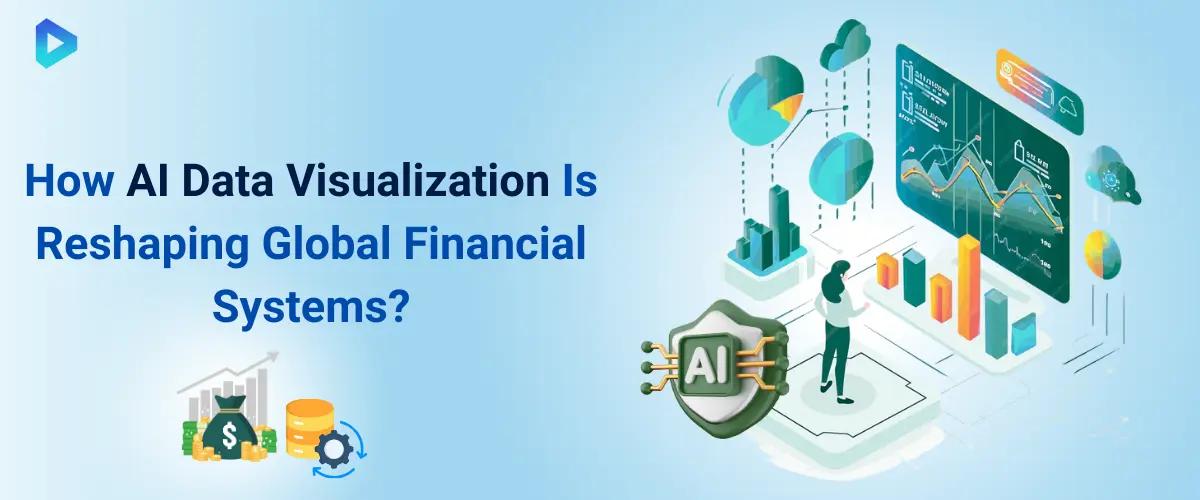
Published on: March 20, 2025 Data Visualization
Data is the new oil, and AI-powered data visualization is the refinery. Imagine making critical economic decisions with clarity and confidence, backed by real-time data insights. AI-powered data visualization makes this possible, transforming how businesses and governments operate. From predicting market trends to optimizing supply chains, AI tools turn complex data into easy-to-understand visuals, enabling faster and smarter decisions. But how exactly does it work, and what does it mean for global economies? In this blog, we’ll explore the applications, benefits, and tools of AI data visualization, and how it’s reshaping industries worldwide. Whether you’re a business leader, policymaker, or data enthusiast, this guide will show you how AI is unlocking the potential of data to drive economic growth.
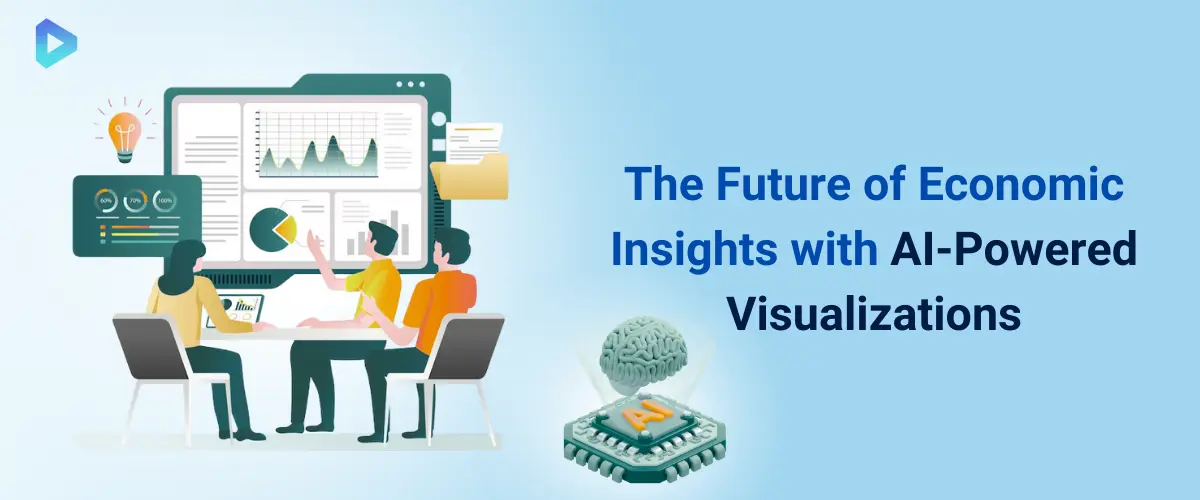
AI-powered data visualization is revolutionizing how we understand and use data for economic growth.
AI-powered data visualization is changing how businesses and economies interpret complex datasets. It combines the capabilities of artificial intelligence with advanced visualization to produce interactive, intuitive graphs, charts, and dashboards. In contrast to traditional data representation methods, an AI-based visualization will automatically identify patterns, trends, and anomalies, enabling users to derive hidden insights with minimal manual effort.
For example, a retail organization could use AI to visualize sales trends and forecast future demand. The data become more consumable and actionable, enabling businesses and governments to make smarter decisions faster.
AI improves data analysis in multiple ways by automating tasks such as data cleaning, discernment of patterns and trend forecasting. This automation saves time and greatly reduces human error in the data analysis process, resulting in more accurate insight.
Key benefits:
For example, a government can use data visualization technology powered by AI to analyze economic data and formulate policies to support growth. By increasing the efficiency of data analysis, AI continues to fuel economic growth.
AI Visualizations allow rapid economic forecasting in real time, helping businesses and governments respond to change. For instance, AI can forecast shifts in the economy by determining various market trends, allowing businesses to adapt and manage risk accordingly.
Key features:
Imagine a financial institution using AI to visualize stocks, providing instant feedback on market trends in real time to enable rapid trading and investment decisions. With real time feedback and recognition provided through AI, organizations will benefit with quicker, smarter, and more confident action taken for enhanced economic performance.

AI-powered data visualization is transforming industries and driving economic growth worldwide.
AI-powered data visualization is revolutionizing finance by turning complex market data into clear, actionable insights. For example, traders can use AI tools to visualize stock trends, predict market movements, and make informed investment decisions in real-time. These tools analyze vast amounts of data, such as historical prices, news sentiment, and trading volumes, to generate interactive charts and dashboards.
Key benefits:
Overall, A-Powered dashboards and tools will make achieving and utilizing financial data more approachable. AI visualization tools enable investors and businesses to access data and confidently operate in the markets.
In healthcare, AI-enhanced data visualization enables physicians and researchers to analyze data in relation to patient care and outcomes. For example, AI can visualize patterns and trends regarding a patient’s health record, project disease outbreaks, and make recommendations for effective care. They can even be used in hospitals to monitor vitals for patients in real-time, and demonstrate variations via a dashboard in a visibly highlighted format.
Key applications:
By converting raw data into highly actionable and usable formats, AI visualization can improve patient care while igniting innovation in health care.
Using AI data visualization is revolutionizing supply chains with real-time insights of logistics, inventory, and trading activity. For instance, companies can use tools designed with AI capabilities to visualize delayed shipments, and gain optimized inventory, and demand fluctuations. These tools gather data about suppliers, inventory and shipping, and develop interactive dashboards based on the multitude of sources.
Three benefits are:
Overall, as businesses can better visualize complex supply chain data utilizing AI visualization, they can reduce costs, support efficiency, and remain competitive globally.
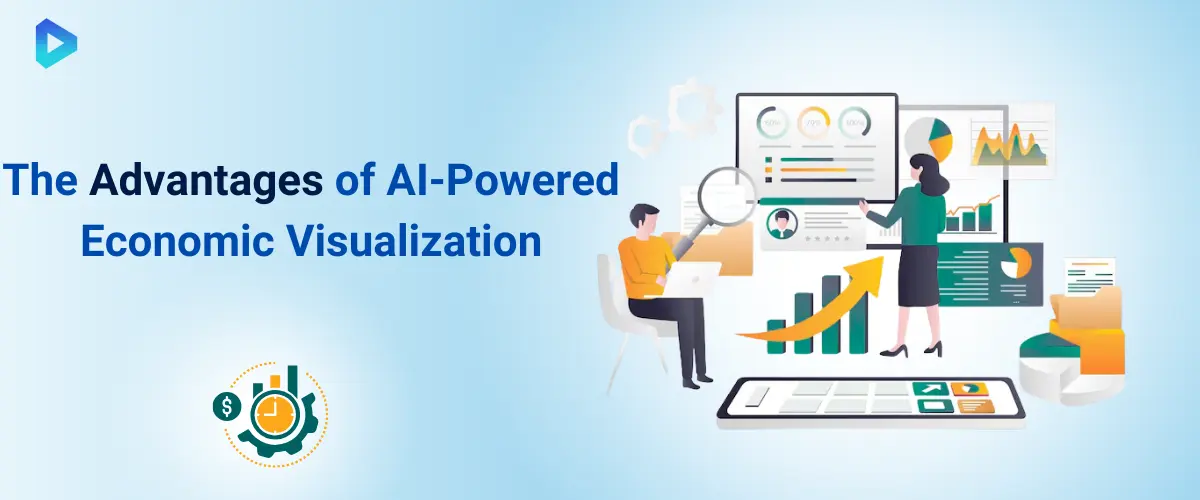
AI-powered data visualization is unlocking new opportunities and driving smarter decisions worldwide.
AI-Supported Data Visualization, a sophisticated and reliable technology for economies and policymakers to generate accurate and general forecasts, can meticulously study significant datasets in real-time. Primarily, AI tools can visualize trends in GDP, unemployment, and inflation, etc., and then allow for governments to create proactive policies. AI tools can predict shifts in the economy, such as a recession or growth in markets, by detecting similarities in historical datasets and current datasets across different jurisdictions.
Key benefits:
By turning complex data into clear visuals, AI empowers leaders to make informed decisions that stabilize and grow economies.
AI-powered data visualization transforms business intelligence by providing actionable insights into market trends and customer behavior. For instance, companies can use AI tools to visualize sales data, track competitor performance, and identify growth opportunities. These tools analyze data from multiple sources, such as social media, surveys, and sales records, to create interactive dashboards.
Key advantages:
AI-powered visualizations quickly simplify the complex, which is a powerful benefit for your company to remain competitive and adapt innovations in your business models during changing market forces.
Data visualization driven by AI helps retailers understand consumer behaviors and enhance their strategies. For example, AI-based tools can analyze purchasing patterns as well as visualize customer preferences and predict future buying trends. With the help of these insights, retailers can personalize their marketing campaigns, manage inventory, and improve customer experiences.
Key impacts:
By turning raw data into actionable insights, AI visualization can equip retailers to better understand customer requests and increase sales.
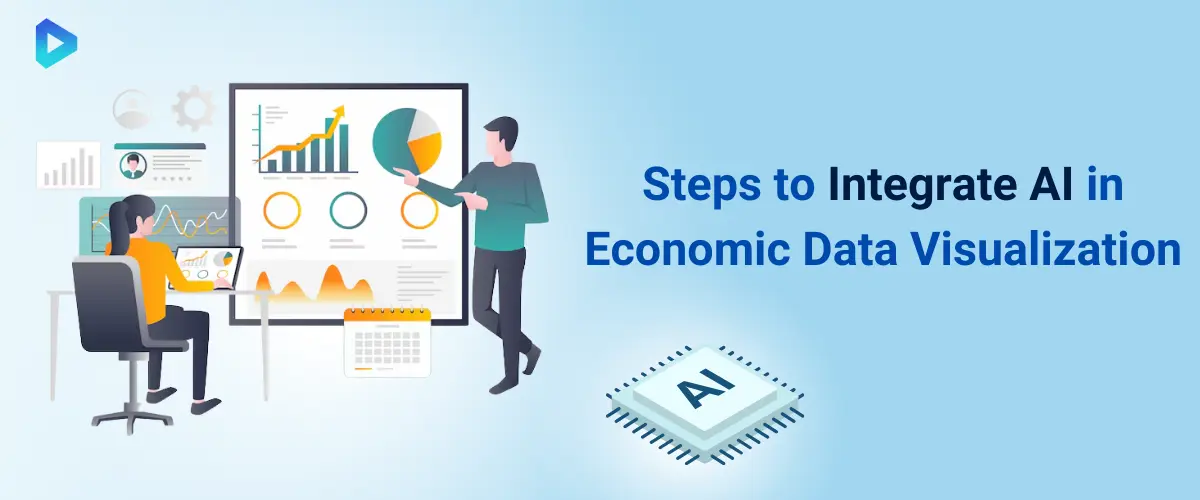
AI-driven data visualization is reshaping how we analyze and predict economic trends.
In order to effectively implement AI into economic forecasting work, outline clear objectives and identify the essential data sources for use. Use the AI tools that will help reach your objectives, for example, predictive analytics platforms or real-time data dashboards. Before analyzing the data, clean and organize datasets to track data quality. Work with data scientists and economists to ensure correctly interpreting key insights.
Some recommended practices:
For example, a government agency that uses AI information to visualize unemployment trends and design job programs around it.
Although AI provides strong insights, it may also raise data privacy, model bias, and integration challenges. To safeguard data, comply with applicable data protection laws, use a wide variety of datasets to avoid bias, and work with experienced AI developers.
Here's a high-level summary of suggested solutions:
For example, a financial services firm might use AI to predict market trends and ensure that customer data remains secure.
Real-world examples show the power of AI in economic analysis. For instance, the World Bank uses AI to visualize global poverty trends, helping policymakers allocate resources effectively. Similarly, retail giants like Amazon use AI to predict consumer demand and optimize supply chains.
Key takeaways:
These examples highlight how AI-powered data visualization drives smarter decisions and economic growth.
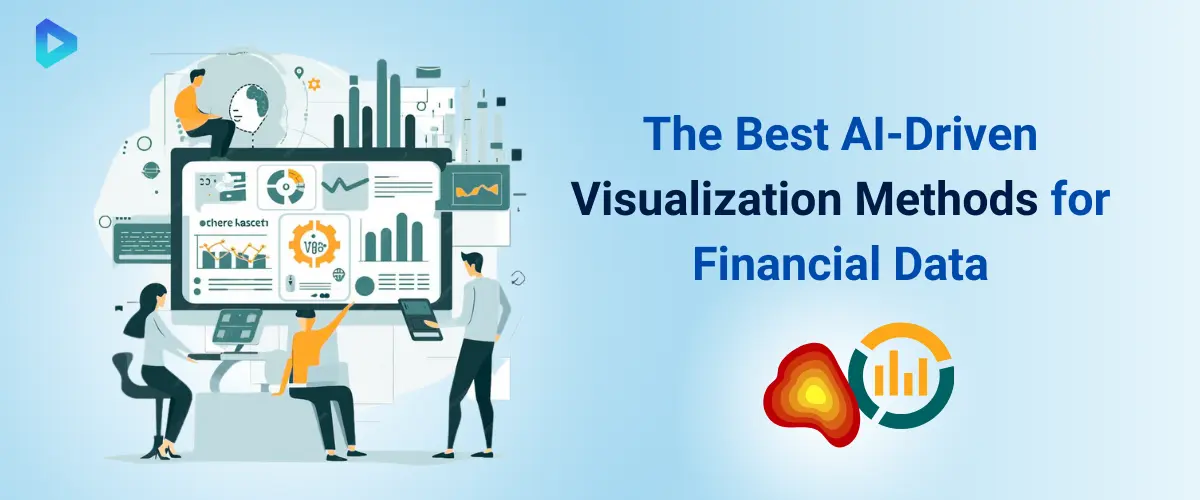
Visualization of economic trends with heatmaps and graphs is one of the most effective ways to view information and concepts through AI. In an example, AI could review GDP growth across regions and generate a heatmap that depicts areas of economic strength and areas of economic weakness. You could use graphs for trends like unemployment rates or inflation rates over time, and such use of graphs allows economists to present complex data in a simple manner.
Key benefits:
By converting numbers into visualization, AI has greatly enhanced the ability of economists and policymakers to build the proverbial sparkling story to elicit action.
AI-driven interactive dashboards allow users to analyze economic data in real-time. A government agency, for example, might utilize a dashboard to simultaneously track changes in unemployment rates, GDP levels, and inflation. Users can filter the data, zoom in on a metro region, and generate custom reports.
Essentials features:
The dashboards provide decision-makers the capabilities to react quickly and decisively based on the latest available data.
Natural Language Processing (NLP) enables AI to analyze and visualize text-based economic data, such as news articles or social media trends. For example, NLP can identify public sentiment about the economy and create visual summaries. It can also generate written reports from raw data, making insights accessible to everyone.
Essentials applications:
By combining text analysis with visualization, NLP makes economic insights more comprehensive and actionable.
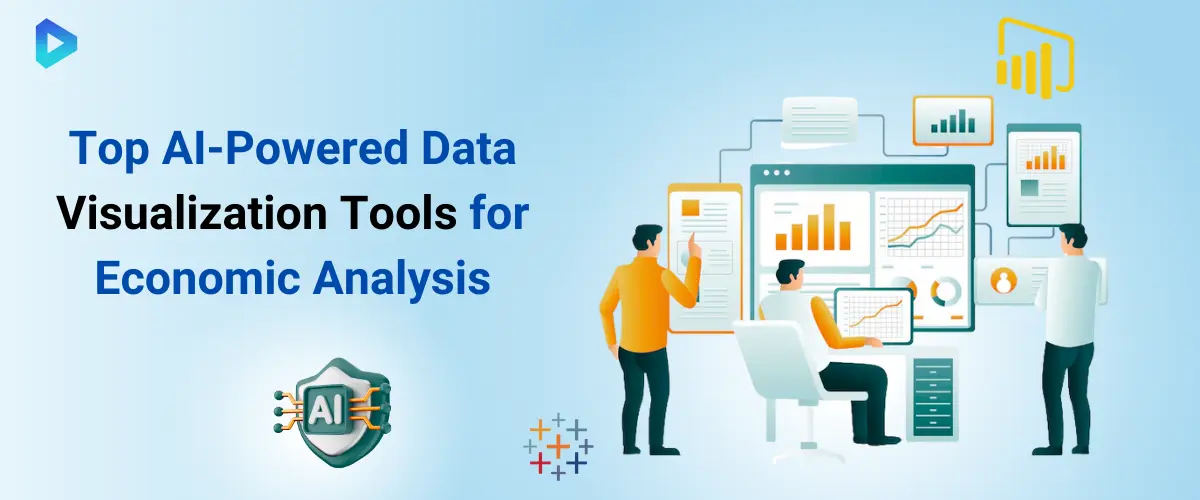
Several AI tools stand out for market and financial data analysis. Tableau uses AI to create interactive dashboards, while Power BI integrates machine learning for predictive analytics. Qlik Sense offers associative analytics, allowing users to explore data freely. For advanced users, Python libraries like Matplotlib and Seaborn provide customizable visualizations.
Key features:
These tools help businesses and governments make data-driven decisions, driving economic growth and innovation.
Choosing the right AI data tool depends on your needs and goals. Start by identifying the type of data you work with and the insights you need. Consider ease of use, scalability, and integration with existing systems. For example, small businesses might prefer user-friendly tools like Tableau, while larger enterprises may opt for customizable solutions like Python libraries.
Key considerations:
By selecting the right tool, businesses can unlock the full potential of their data and drive growth.
The future of AI data visualization is exciting, with trends like augmented analytics, real-time processing, and immersive visuals gaining traction. Augmented analytics uses AI to automate insights, while real-time tools enable instant decision-making. Immersive technologies like VR and AR are making data visualization more interactive and engaging.
Key trends:
These advancements will make data visualization more accessible, powerful, and impactful for economic growth.